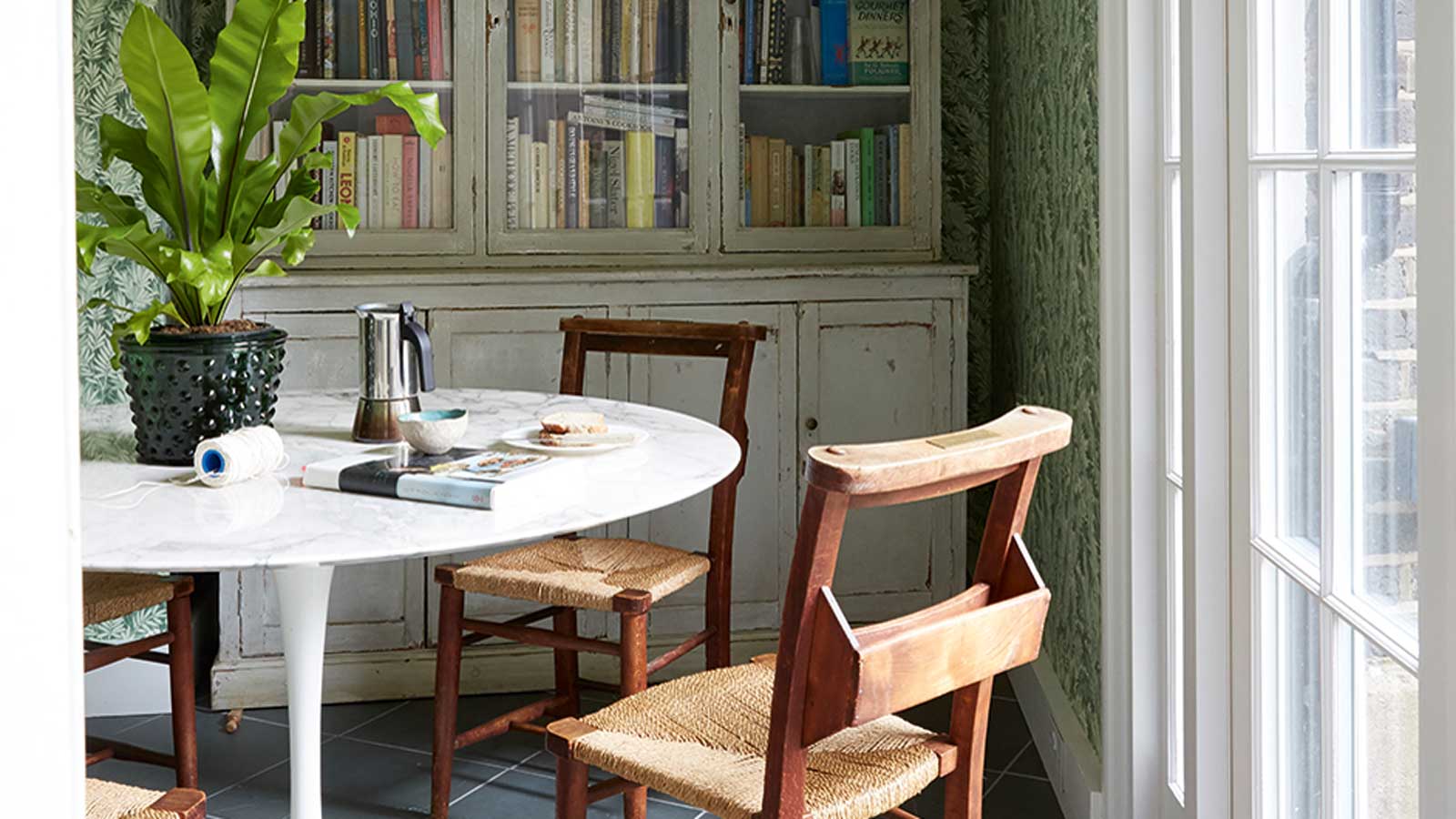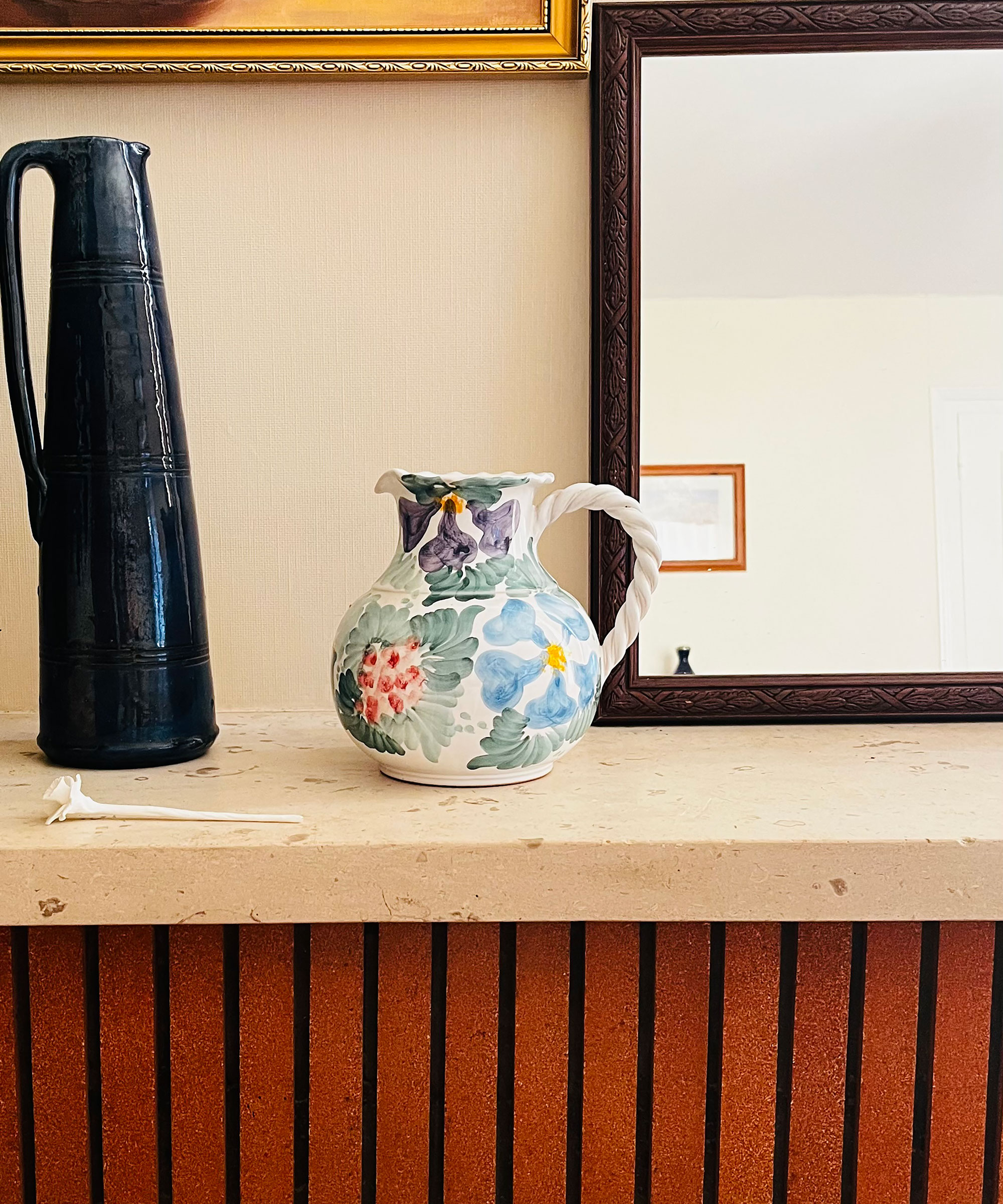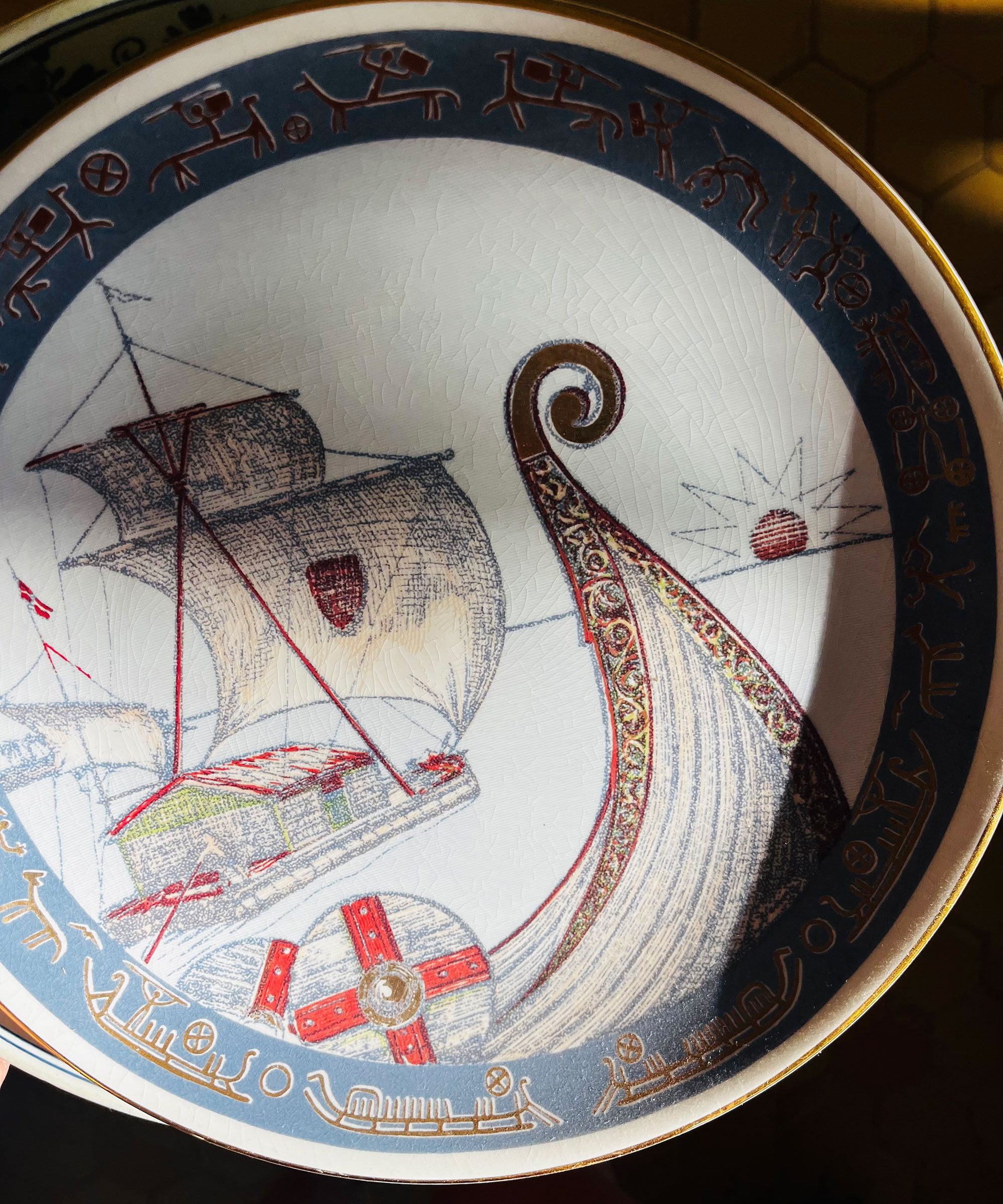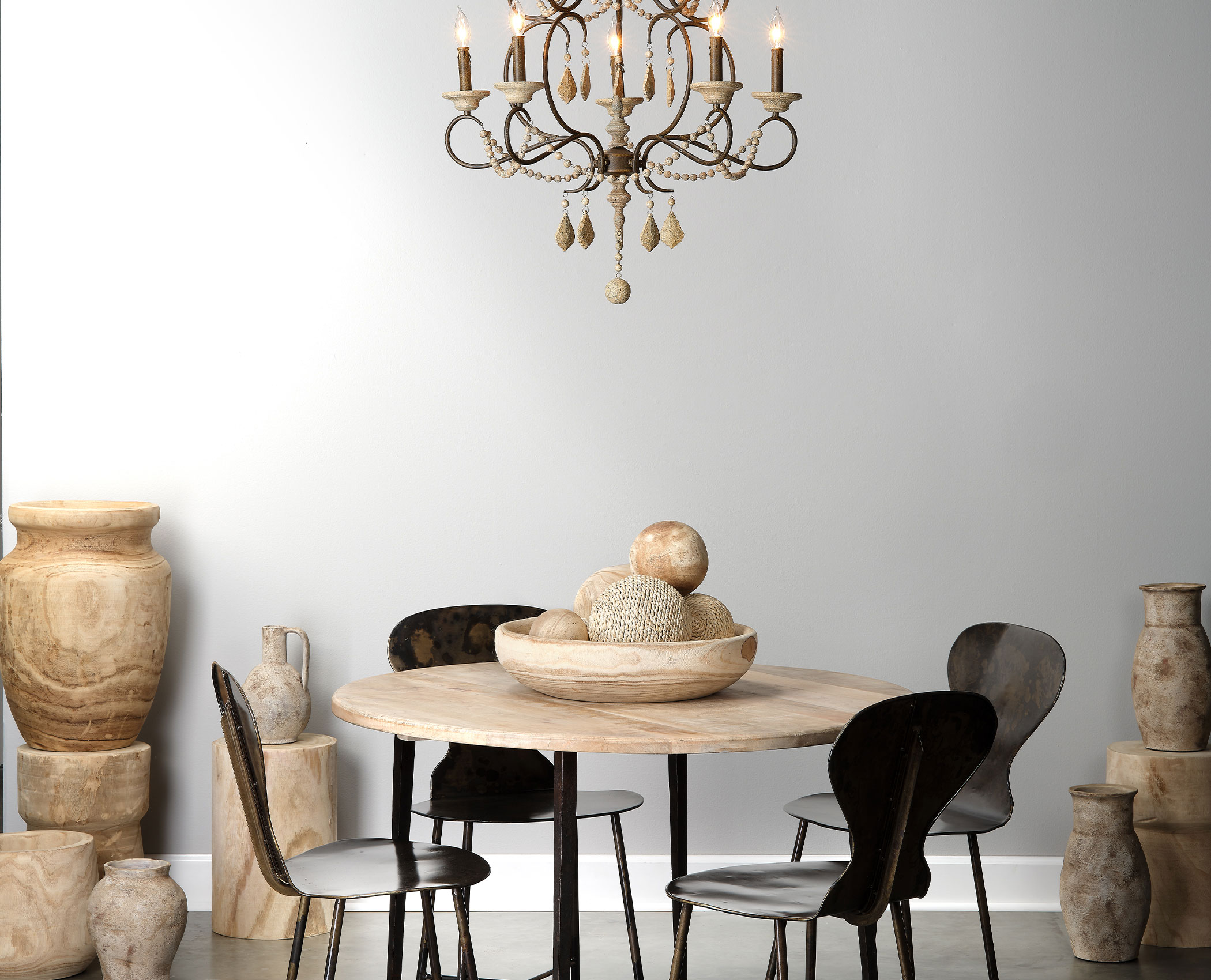I made some changes to my parents’ home in France – now we have 3 new trinket rules
The space flows far better


I recently spent two weeks in France with my family. Returning to the land of wine, cheese, and croissants is a regular occurrence that I am truly grateful for. I cannot lie that after my first stop at our local bakery, there is usually a visit to the 'bric-à-brac' store, where unique vintage lamps, pieces of furniture, and more humble gems always seem to be waiting for me to stop by.
Since my visiting France is more of a return trip home rather than a family vacation, we do spend a lot of time at home lazing in the garden and having extended coffee sessions. More time at home on this occasion gave me the chance to appreciate what my parents had done with the space since they moved in, some 10 years ago.
While nothing was particularly wrong, I did feel that there was room for improvement and one of the areas that struck me as needing a little more thought was the abundant display of ornaments and trinkets. Shelves were certainly decorated, but perhaps a little too much...
Our new 'trinket' rules
The edits I made were mostly between the dining area and living room, which are joined by glass double doors making for a lovely and convivial space when open.
My goal was to make these two rooms in particular feel a touch cozier, more balanced, and naturally more inviting.
It is important to note here that I am using 'trinket' as a blanket term for ornaments and heirlooms – both of which are often priceless – and for more modestly valued items.
As some might relate to, my parents' home is filled with generations of items. From a great-grandmother's favorite vase to my graduation photo, you will find it all under their roof. When all manner of items begin to spill into spaces where they don't entirely belong, it can cause a more chaotic ambiance than you had probably planned for.
Design expertise in your inbox – from inspiring decorating ideas and beautiful celebrity homes to practical gardening advice and shopping round-ups.
What I had noticed, in our family home was that my parents – with the sweetest intentions – had simply kept adding to their ornament and trinket collection. Gifts (guilty), new acquisitions (easily done in France), and recovered antiques from the garage, were all taking center stage. Leaving little breathing room for intentional design choices.
So I started to play around with how things were presented and once done, we felt like the space flowed much better, feeling less cluttered and more beautiful. These are the rules we aim to stick by from now on.
1. Corralled items must share points in common

The vase to the left is a family heirloom and the piece to the right is a vintage, limited-edition Italian vase.
With so many beautiful items to display, eclectic might be the best descriptive word here. What I found was that some of the more intriguing of my parents' possessions were getting lost behind those with less aesthetic value. It was easier to take an organizational approach to the displays by grouping ornaments, trinkets, and heirlooms that had something visual in common.
Jamie Young, Founder and President of Jamie Young Co. notes how this technique can work in our favor: 'Grouping is the best way to create a cohesive look with decorative accessories in a room,' says Young.
'The obvious is coordinating decorative pieces in a specific color palette. This creates a visual harmony. For example, if you have a collection of blue and white ceramics, gather them on a shelf or in a cabinet.'
With the above display, the blues and whites of the vases paired with the small ceramic rose creates cohesion.
When it wasn't colors, we went by shape, or even era. It's actually a lot of fun looking at heirlooms and trinkets with this level of detail too. As we can see, there is some relation between the floral curves in two out of the three items here.

Jamie, born and bred in California, loves to bring non-traditional yet approachable design into the home. Finding inspiration from her home, she elevates the joy and warmth of coastal living with modern yet comfortable design. But it was through travel, around the country and around the world, that Jamie found a harmony between her and her husband's sculptural aesthetics. Together they started Jamie Young Co. to bring their vision to life, and into the homes of others.
2. We group in threes, or odd numbers

Cluster of Royal Doulton crystal, a ships decanter, and thrift store crystal find.
I tend to display items in odd numbers, usually limiting this to three, around my home in London and so this is another part of our family trinket rulebook too.
My stepfather has been an avid collector of crystal most of his adult life, and although he still often keeps his favorites safely in a cabinet, for those that we corralled, we did so in odd and limited numbers for a more restful finish.
'I also recommend grouping in odd numbers (like three, five, or seven) – they’re more appealing to the eye and feel more balanced. You could cluster three different-sized vases on a table or arrange five framed photos on a gallery wall,' recommends Young.
3. Items must make wonderful conversation starters

If you are working with numerous items, giving priority to those that will spark joyful and interesting conversations is a good rule to go by. This plate was purchased in Norway many moons ago and makes a superb starting point for shared travel stories and the like. 'It is from Norway. Though I can't remember exactly where I bought it, it was in the 1970s,' my stepfather told me.
Items like these now have pride of place to catch the eye of guests and neighbors when stopping by for coffee or to exchange delights from the garden. Our fig tree was in good spirits this year.
Is there anywhere less suited to trinkets?
In my London home, I keep most ornaments in the living room and dining room as otherwise, the spaces feel a little too crowded. What trinkets I keep on display for me usually depends on the season.
'It is possible to have too many decorative pieces and trinkets in a home! While adding personal touches is essential to making a space feel decorated, overdoing it can lead to a cluttered, chaotic look. Too many decorative items can overwhelm the eye and make a room feel cramped,' says Young.
Trinkets in the kitchen, unless a unique saltshaker or item with function, might be better off elsewhere. Young says: 'There are a few areas of a home where you should be cautious about keeping these items. First is the kitchen – you want to be mindful that this is one of the more functional rooms in your home, so don’t overcrowd countertops with trinkets on surfaces that you use to prepare food and need to stay clean and easy to use.'
Another space where I have often revised what trinkets, ornaments, and artwork I keep on display is the bedroom and this is an area where you should be conscious of not keeping too many on display Young shares: 'The second area is the bedroom, as too many items can disrupt the serene, restful atmosphere you should aim for in that room. Save the precious space in the bedroom for just a few keepsake items that mean the most to you.'

How should you decide what ornaments to display?
Ornaments and trinkets will undoubtedly hold memories, some more than others. Items with fond thoughts and stories behind them make wonderful conversation starters for family, friends, and neighbors.
Millie Hurst, Homes & Garden Section Editor reminds us that it might take some trial and error to find a display that works for your homes. 'Do not expect an arrangement to be perfect on the first go,' says Hurst who recommends playing around with different arrangements and objects. One of Hurst's personal go-to's is to contrast textures where possible. For instance, pairing rattan or wicker with glass or something else seamless. This technique will bring out the different finishes in both. Corral items on a printed porcelain trinket tray, at Net-A-Porter, to create an intentional ornament display.
These edits worked for our family home but it all depends on what ornaments you typcially collect and, of course, how you like to style your home.

Camille is the former deputy editor of Real Homes where she covered a broad range of topics, including house tours, small space design, and gardens. She studied English language and Italian at the University of Manchester and during a year abroad studying linguistics and history of art in Bologna, Italy she started documenting her adventures and observations in a blog. Camille is always creating and spends her downtime painting, taking photos, traveling, and writing short stories.